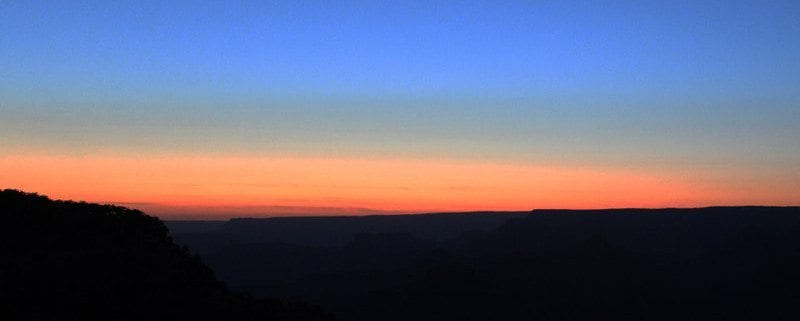Grand Canyon National Park Received International Dark Sky Park Status in June 2019
It is a big year for the Grand Canyon National Park. First, in February 2019, the
celebration of the National Park’s hundredth year began. Then, only a few months later,
in June 2019, the Grand Canyon Conservancy celebrated the park’s designation as an
International Dark Sky Park.
It took three long years of hard work and dedication but on June 22, 2019, the Grand
Canyon earned the well-deserved status.
The start of the journey for the National Park started in June 2016, when the park
received provisional dark-sky status. This was in response to a proposal that stated the
park would be outfitted with special lighting throughout two-thirds of the park. These
lights, which shine on the ground and are a lower-wattage LED bulb are the only lights
to comply with the strict guidelines of the status.
The goal of the project was to earn full dark-sky status in time for the park’s 100th
anniversary in 2019.
Ever since the provisional dark-sky status was awarded in 2016 Grand Canyon workers
have retrofitted over 1,500 light fixtures. This gives the park the ability to claim that 67%
of the park’s lighting meets the standards imposed by the International Dark-Sky
Association.
In 2001, the International Dark-Sky Association established the International Dark Sky
Places conservation program. This program was designed to encourage places of
authority to take steps to reduce light pollution and make it easier for people to enjoy the
night sky.
The park and the conservancy were able to have their big celebration in June, when the
Grand Canyon officially became designated as an International Dark
Sky Park. However, their work is far from done. The park hopes to have 90% of the
lighting compliant to the association’s standards by 2022.
Nevertheless, the Grand Canyon is extremely excited about their major step forward.
The official status came in time for the annual Star Party, making 2019’s celebration
even more special
In addition to Dark Sky Park status, the celebration commemorated the Grand
Canyon’s centennial and the 50th anniversary of the moon landing.
Additionally, the Grand Canyon National Park is not the only Arizona native with this
title. Here is a list of the different places in the Copper State that are also deemed Dark-
Star Areas:
Camp Verde
Flagstaff
Fountain Hills
Grand Canyon National Park
Kartchner Caverns State Park
Village of Oak Creek (Big Park)
Oracle State Park
Petrified Forest National Park
Sedona
Sunset Crater Volcano National Monument
Parashant National Monument
Tonto National Monument
Tumacácori National Historical Park
Walnut Canyon National Monument
Wupatki National Monument
For more information about the International Dark-Sky Association, visit their website
at darksky.org.


 https://pixabay.com/en/usa-the-grand-canyon-landscape-3409701/
https://pixabay.com/en/usa-the-grand-canyon-landscape-3409701/